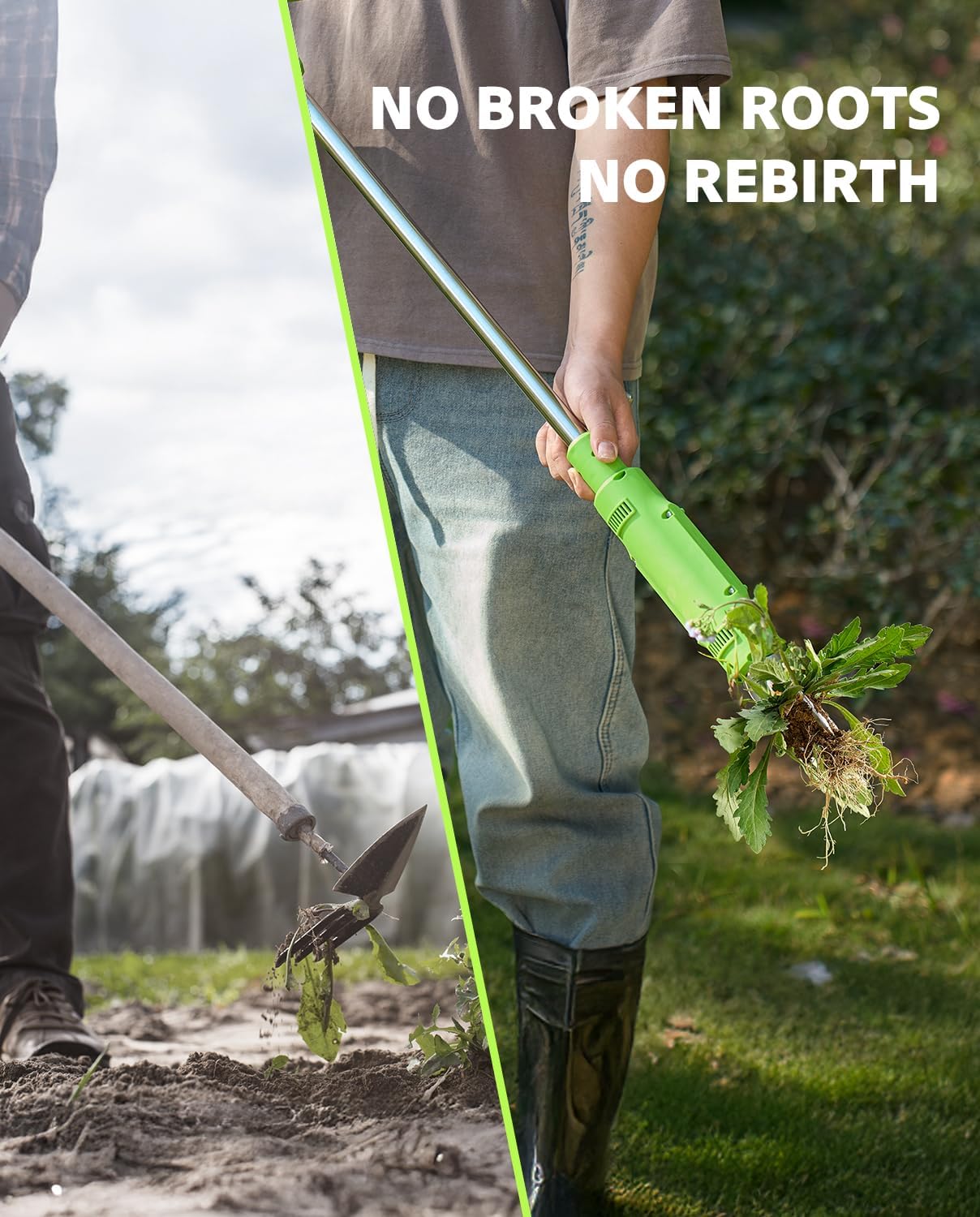If you’re dreaming of a garden that bursts with color, fragrance, and the gentle hum of bees and butterflies, growing a lavender hedge in Australia is a fantastic way to get started. While lavender isn’t traditionally grouped under shrubs for front of house, it serves beautifully as a fragrant, flowering alternative that adds year-round appeal. Loved for its stunning purple blooms, lavender attracts beneficial pollinators while thriving with minimal care—qualities that also make it a great companion to low-maintenance shrubs in your front yard.
This drought-tolerant, hardy plant is well-suited to Australia’s diverse climates and can be paired alongside traditional shrubs for front of house like Boxwood or Hydrangeas for an eye-catching, aromatic hedge. With a little planning, your front garden can be a seamless blend of structure and softness—thanks to the perfect combination of lavender and classic shrubs for front of house.
Table of Contents
Steps to Grow a Lavender Hedge
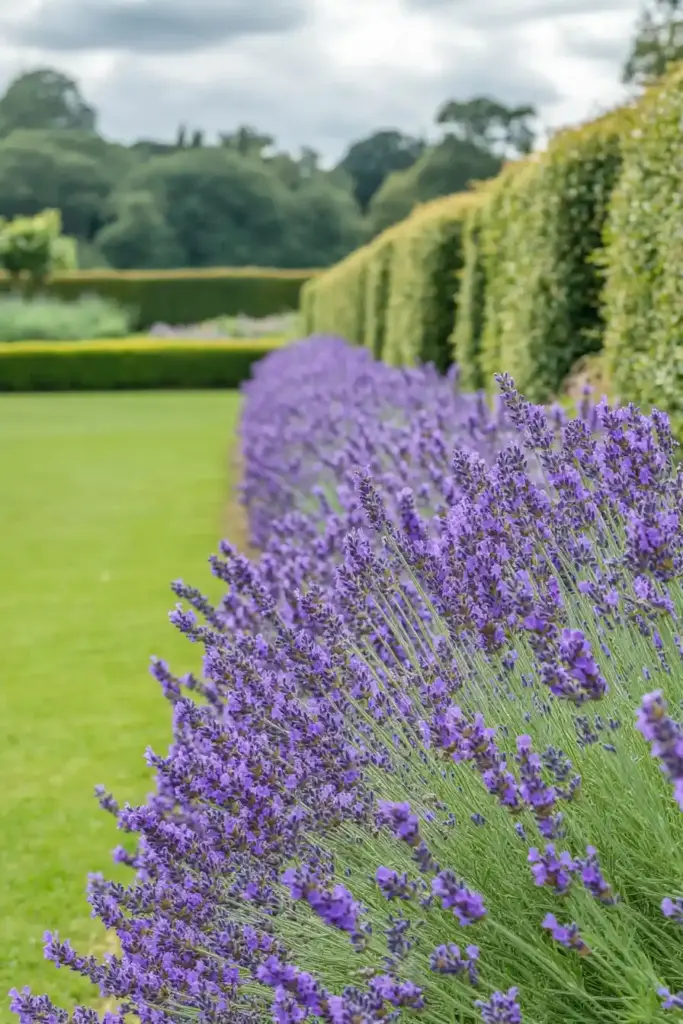
Select the Right Variety
Choosing the right type of lavender is the first step toward success. For growing a lavender hedge in Australia, the best options are English lavender (Lavandula angustifolia) or hybrid varieties. These types are prized for their hardiness, compact growth habits, and delightful fragrance, making them ideal for forming neat, attractive hedges.
When to Plant
Timing matters when it comes to lavender. The best time to plant your hedge is in spring, once the risk of frost has passed. This gives the young plants plenty of warm weather to establish strong roots before facing hotter conditions.
Where to Plant
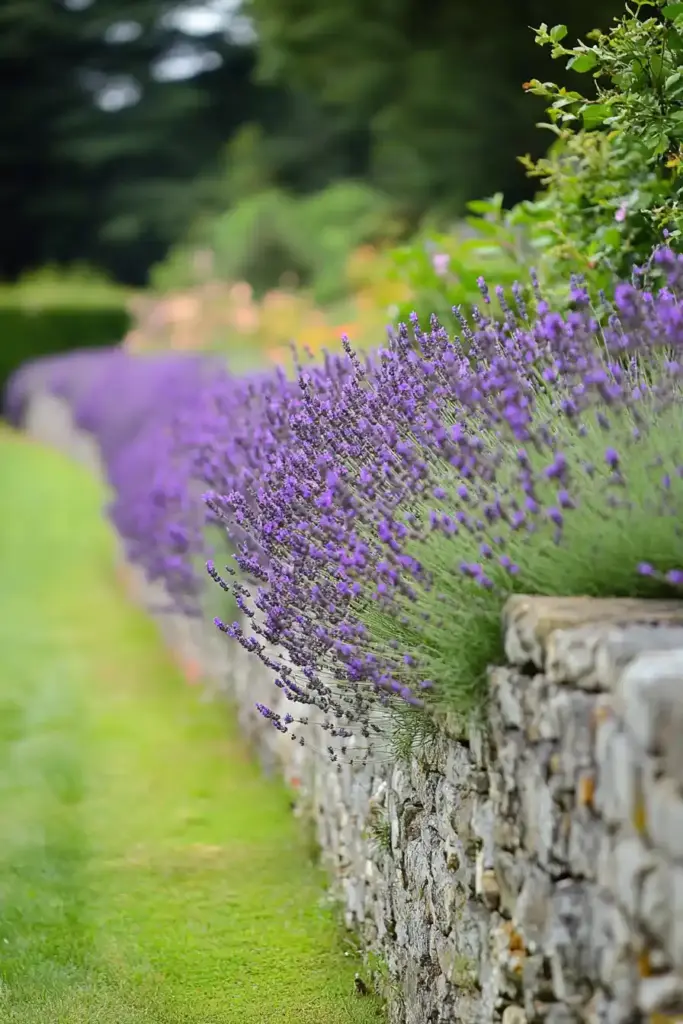
Lavender loves the sun! Choose a full sun location where your plants will receive at least six hours of direct sunlight each day. Good drainage is crucial — lavender hates having “wet feet,” so avoid low-lying areas where water tends to pool.
Preparing the Soil
Healthy soil sets the foundation for a thriving lavender hedge. Aim for a sandy loam soil or, if you’re dealing with heavier clay, amend it by adding gypsum to improve drainage. Lavender prefers soil that is slightly alkaline and doesn’t need heavy composting. In areas prone to water retention, consider mounding the soil slightly to encourage better runoff.
How to Plant
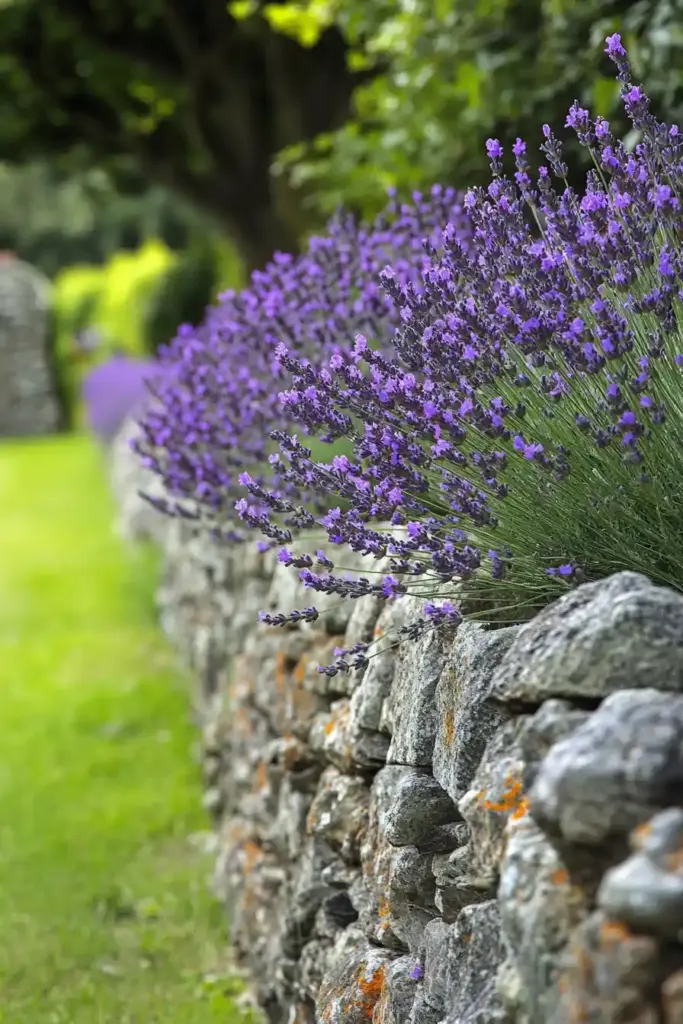
Planting your lavender hedge properly sets it up for long-term success. Here’s how to do it right:
- Spacing: Place your lavender plants 30–45 cm apart. This close planting encourages the plants to grow into each other, forming a lush, continuous hedge.
- Planting holes: Dig holes that are wide and deep enough to comfortably fit the roots. Gently tease out the roots if they’re circling at the bottom of the pot — this helps the plant settle in faster.
- Planting: Position each lavender plant so the top of the root ball sits level with the soil surface. Fill in the hole and firm the soil lightly around the base.
- Watering in: Water each plant thoroughly after planting. This helps settle the soil around the roots and removes any air pockets.
With the right planting technique, your lavender hedge will be off to a strong start!
Caring for Your Lavender Hedge
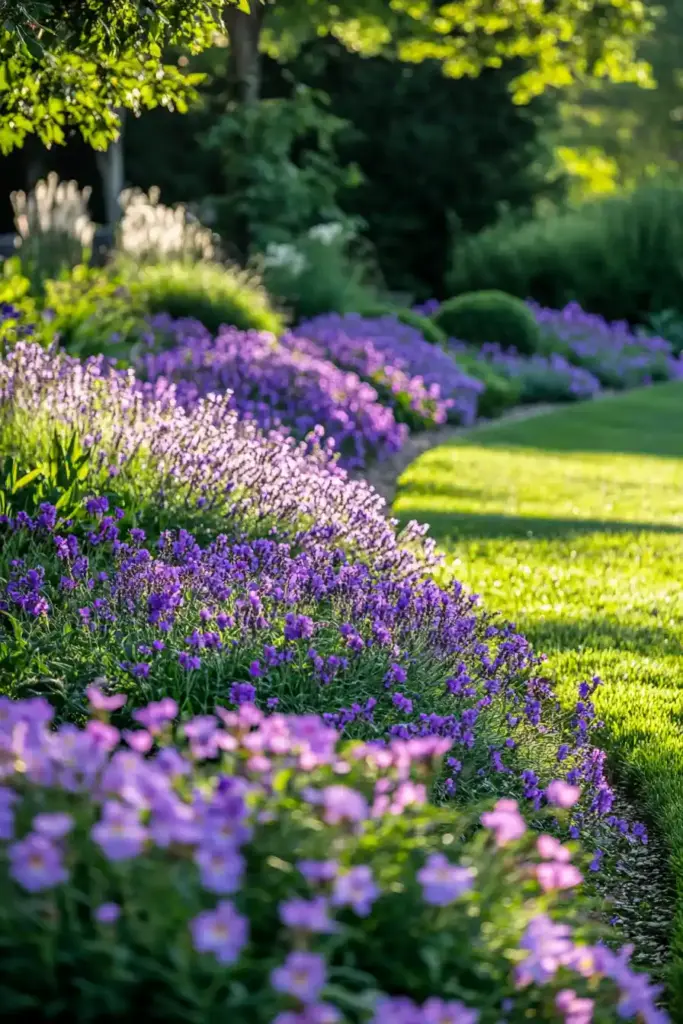
Lavender is wonderfully low-maintenance, but a little thoughtful care will help your hedge thrive for years.
- Watering: During the first growing season, water regularly when the top 5–10 cm of soil feels dry. This encourages the roots to dig deep.
Once established, your lavender hedge will only need watering during prolonged dry spells. - Feeding: Every so often, especially during the early stages, treat your plants to a liquid seaweed feed (like Seasol). This natural tonic supports strong root growth without promoting excessive leafy growth.
- Deadheading: Snip off spent flowers as they appear. This keeps your hedge looking neat and encourages a second flush of blooms.
By giving your lavender a little TLC, you’ll enjoy vibrant colour and fragrance season after season!
Pruning Your Lavender Hedge
Regular pruning keeps your lavender hedge dense, tidy, and full of life.
- When to prune: Plan to prune your lavender once a year, ideally in late summer, just after the main flowering period has finished.
- How to prune:
- Remove all spent flower stalks.
- Trim back the foliage by about 2.5 cm to maintain a compact shape.
- Always avoid cutting into the old, woody stems — lavender doesn’t regenerate well from old wood, and heavy pruning here can damage the plant.
A light, consistent pruning routine keeps your hedge looking lush, encourages better flowering, and extends the plant’s lifespan.
Lavender Problems, Pests, and Diseases
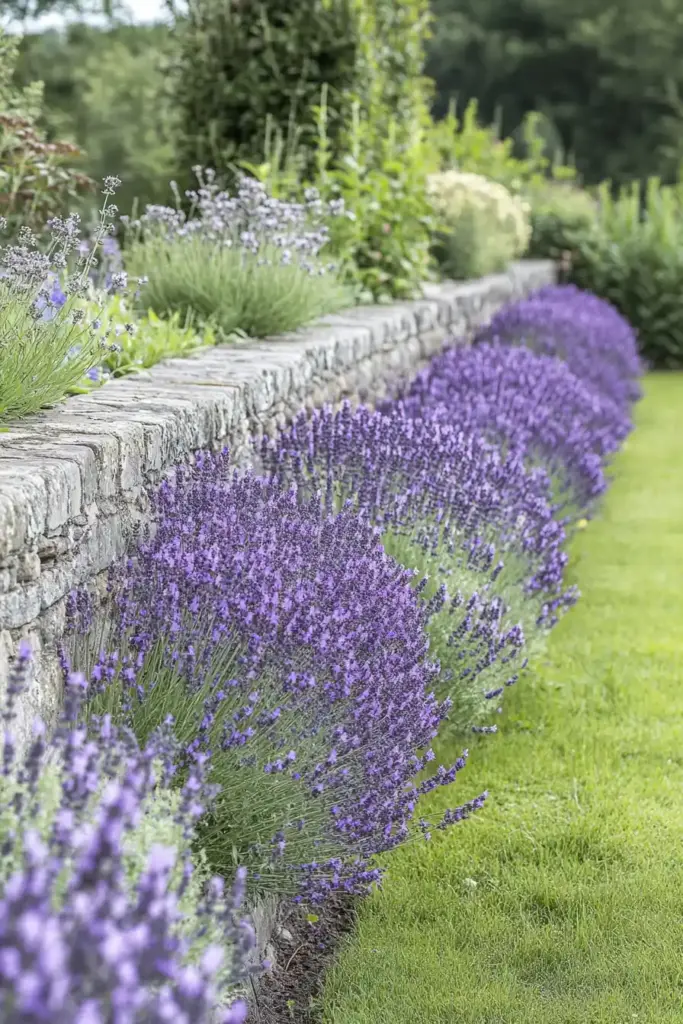
One of the many reasons gardeners love growing a lavender hedge in Australia is how hardy and resilient lavender can be. However, a few issues can occasionally crop up:
- Root Rot: This is the most common problem, usually caused by poor drainage. If the roots sit in soggy soil, they can quickly rot. Prevent this by planting in well-draining soil and avoiding overwatering.
- Pests and Diseases: Lavender is generally pest-resistant, but in rare cases, you might spot aphids or spittlebugs. A gentle spray of water or an organic insecticidal soap usually takes care of them.
- Other Issues: If your lavender looks leggy or sparse, it might not be getting enough sunlight or may need a rejuvenating prune.
By addressing these issues early, you can keep your hedge looking vibrant and healthy all year long.
FAQ
What is the Best Lavender Variety for a Hedge?
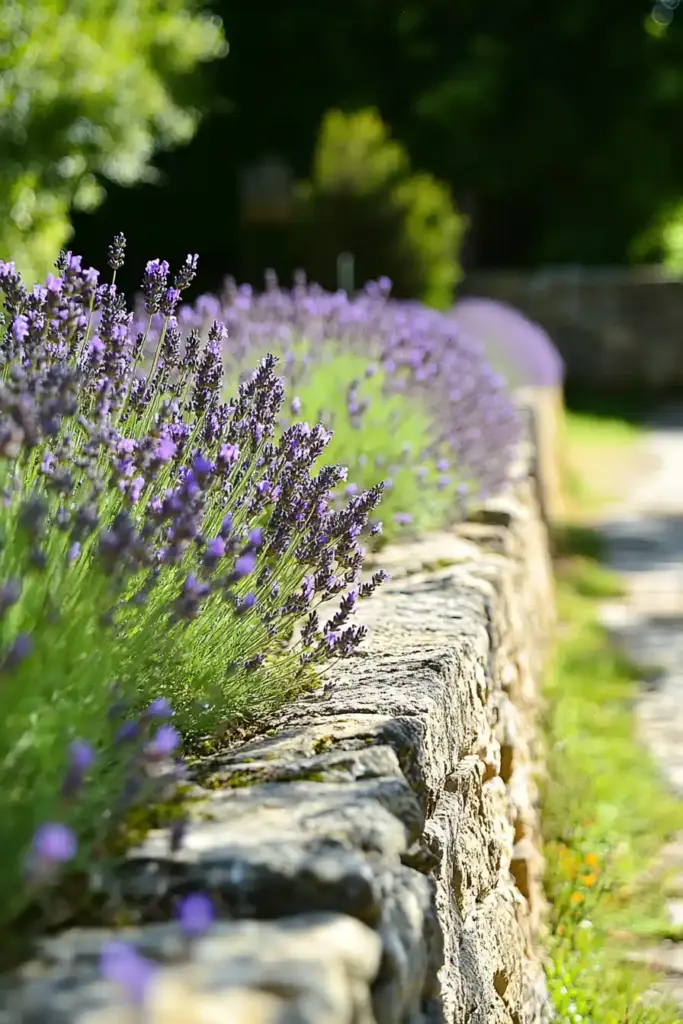
For growing a lavender hedge in Australia, you can’t go wrong with English lavender (Lavandula angustifolia) or popular hybrids like ‘Purity’ and ‘Melissa Lilac’. These varieties offer dense growth, a beautiful fragrance, and exceptional tolerance to Australian conditions.
Can You Use a Hedge Trimmer on Lavender?
Yes, you can — but with caution!
A hedge trimmer is handy for light shaping, but avoid cutting into old wood and never remove more than one-third of the plant at a time. Gentle, careful pruning helps maintain your hedge’s health and appearance.
Conclusion
Growing a lavender hedge in Australia is a truly rewarding project that adds beauty, fragrance, and long-lasting vitality to your landscape. While lavender may not be the first plant that comes to mind when thinking of shrubs for front of house, it pairs wonderfully with more structured options like Boxwood or Inkberry Holly to create a welcoming, layered garden design.
With the right variety, full sun, well-drained soil, and a bit of seasonal pruning, your lavender hedge will not only thrive—it will complement your other low-maintenance shrubs for front of house beautifully. From the calming aroma to the constant hum of pollinators, combining lavender with classic shrubs for front of house transforms your outdoor space into an effortlessly charming, nature-friendly retreat.


